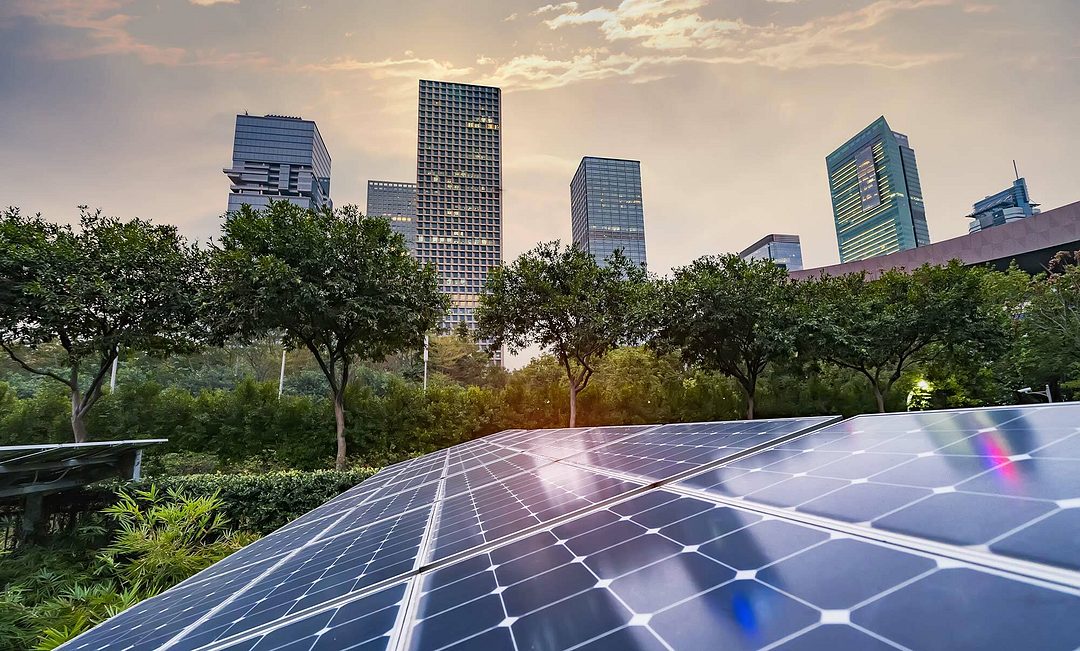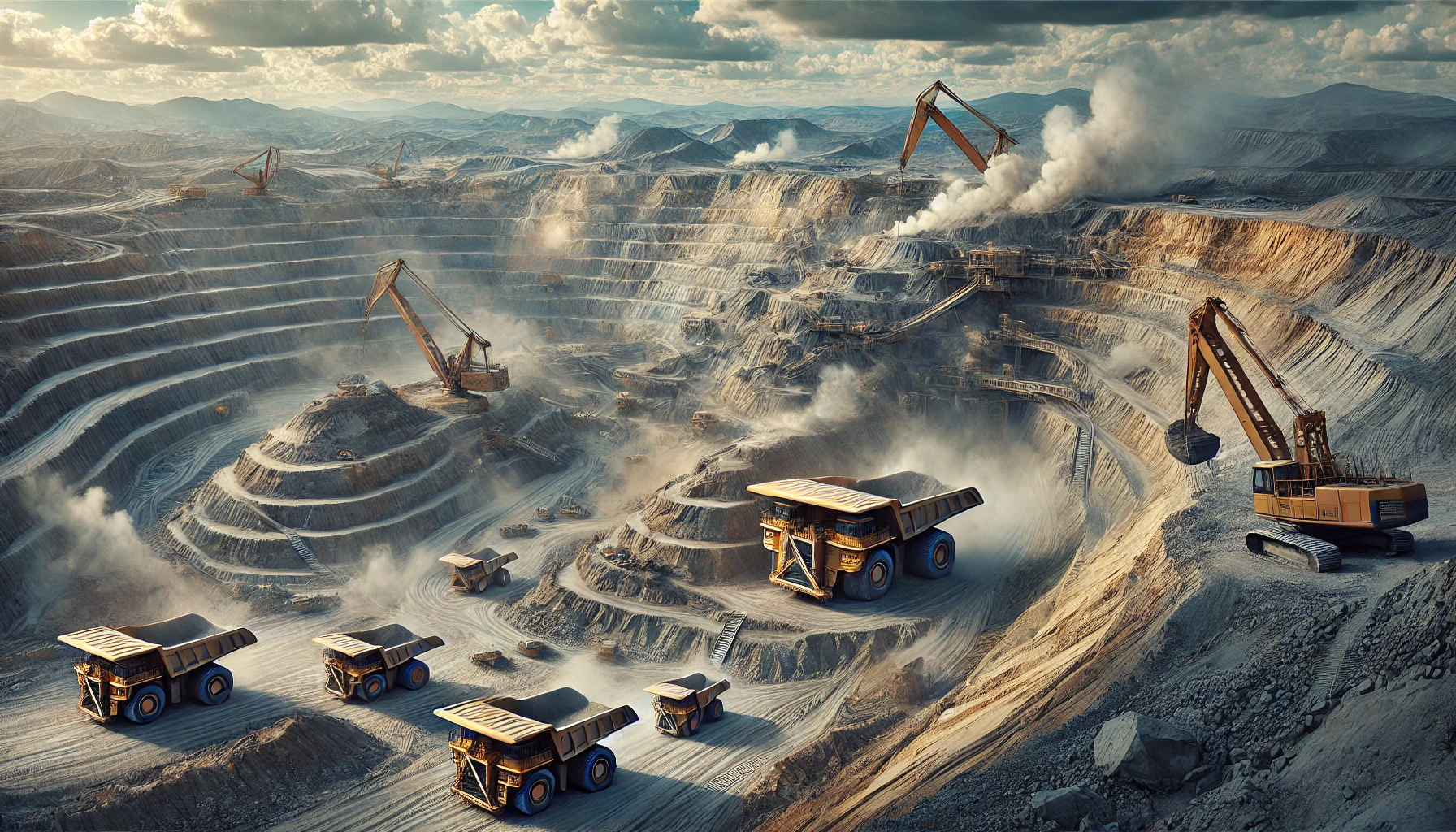-
-

The Green Illusion: Why Humanity Isn’t Ready for a Fossil-Free Future (Yet)
The Dream of a Fossil-Free Future
Across governments, corporations, media outlets, and activist circles, the narrative is clear: we are entering a new era of clean energy. Solar panels glisten on rooftops, wind turbines spin on rolling hills, and electric vehicles glide silently through cities. Politicians pledge to end fossil fuel use by 2050, corporations race to declare net-zero targets, and the public is assured that a sustainable future is within reach.
But beneath this hopeful story, a deeper reality lurks: the transition from fossil fuels is not just a technical project—it’s a civilizational challenge involving material scarcity, ecological limits, industrial scaling, geopolitical risk, and human psychology. Without reckoning with these limits, we risk building a green mirage instead of a truly sustainable future.
The Rare Earth Bottleneck: Numbers That Don’t Add Up
Every green technology—solar panels, wind turbines, EVs, batteries, and smart grids—relies on critical minerals: lithium, cobalt, nickel, copper, graphite, neodymium, dysprosium, and more. These are not optional luxuries; they are the backbone of decarbonization strategies.
Professor Simon Michaux (Geological Survey of Finland), working with the Sustainable Minerals Institute at the University of Queensland, calculated the amount of raw materials needed to build just one generation of renewable infrastructure to replace fossil fuel systems worldwide—then compared it to 2019 global production rates. The results are stunning.

Material Required (Tonnes) Annual Production (2019) Years to Meet Demand Graphite 8.26 billion 930,000 8,883 Copper 4.58 billion 20.3 million 225 Nickel 944 million 2.7 million 350 Lithium 938 million 77,000 12,185 Cobalt 359 million 123,000 2,920 Germanium 4.16 million 207 20,113 Rare Earths (Total) 2.05 billion 240,000 8,537 Tellurium 1.57 million 1,306 1,205 Indium 782,000 1,070 731 Tin 4.58 million 267,000 17 Silver 529,000 27,000 20 Platinum 27,000 200 135 Neodymium 14,800 7,000 2 Dysprosium 2,340 1,400 2 This table reveals a stark truth: even if global production rates doubled, tripled, or quadrupled, we would face decades or even centuries of extraction just to complete one cycle of green infrastructure. And it doesn’t account for maintenance, replacement, growing global demand, or the environmental cost of mining at such unprecedented scales.
Next: EV Problems, Mining Impacts, Battery Limits, Supply Chains…
EVs: Not as Clean as Advertised

Electric vehicles (EVs) are often marketed as zero-emission solutions. Yet their manufacture — particularly the battery — has a carbon and ecological footprint that is rarely acknowledged in public messaging. According to studies from the International Energy Agency (IEA, 2023), manufacturing an EV can emit 1.5 to 2 times the CO₂ of a conventional vehicle. The primary culprits are the mining, transport, and processing of lithium, cobalt, nickel, and graphite — all critical battery materials.
While EVs can have lower lifetime emissions when powered by clean electricity, in countries where grids remain fossil-fuel dependent (such as China, India, and parts of the U.S.), their advantage diminishes sharply. Moreover, studies from MIT (MIT Energy Initiative) warn that the global lithium supply is insufficient to electrify all cars, trucks, ships, and planes. Betting the entire future of mobility on battery chemistry is not only technologically risky — it is geologically constrained.
Mining Impacts and Industrial Scaling Limits
Mining is an energy- and water-intensive activity. Lithium brine extraction in Chile’s Atacama Desert consumes 500,000 gallons of water per metric ton of lithium. Cobalt mining in the Democratic Republic of Congo causes deforestation, toxic runoff, and water pollution. Nickel mines generate sulfur dioxide emissions that damage surrounding ecosystems. Even recycling faces barriers: most lithium, cobalt, and rare earths in existing products are not recovered at industrial scale, and recycling itself requires large energy inputs.
Beyond extraction, there are scaling limits. Gigafactories cannot be built overnight. Battery plants, cathode factories, anode suppliers, separator manufacturers, and electrolyte processors all require specialized equipment, skilled labor, and complex permitting. As BloombergNEF reports (BNEF Electric Vehicle Outlook), the global battery supply chain is already straining under demand, leading to price spikes, delivery delays, and resource hoarding. Scaling the system from millions to billions of units will face exponentially harder barriers.
Supply Chain Fragility and Geopolitical Risks
Clean energy supply chains are highly geographically concentrated. Over 70% of cobalt is mined in the Democratic Republic of Congo. China refines over 60% of global lithium and produces 90% of rare earth magnets. Russia, South Africa, and Zimbabwe control large shares of platinum group metals. As nations scramble for resource security, we can expect new waves of resource nationalism, export restrictions, trade wars, and geopolitical tensions.
The 2021 semiconductor shortage — which crippled carmakers, smartphone producers, and appliance manufacturers worldwide — offers a preview of what may happen if critical minerals face disruption. Without resilient, diversified supply chains, the energy transition risks collapsing under its own ambition.
Battery Limits and the Myth of Universal Electrification
While battery technologies are advancing, they face scientific and thermodynamic limits. Lithium-ion chemistries are approaching energy density plateaus. Alternative chemistries (solid-state, sodium-ion, zinc-air) are promising but remain in early development and carry their own material constraints. As the U.S. Department of Energy (DOE Vehicle Technologies Office) notes, scaling battery storage to back up national grids at the terawatt-hour level would require orders of magnitude more materials than are currently mined.
Moreover, not all sectors are easy to electrify. Aviation, maritime shipping, heavy industry, and long-haul trucking require energy densities far beyond current battery capabilities. Hydrogen and synthetic fuels offer alternatives but remain unproven at industrial scale. Universal electrification is not guaranteed; sector-specific solutions are essential.
Energy Return on Investment (EROI): The Hidden Metric
EROI — the ratio of usable energy produced to energy invested — is a foundational metric in energy systems. Historically, conventional oil offered EROIs of 30:1 or higher. Coal ranged between 50:1 and 80:1. Wind offers around 20:1, solar photovoltaics around 4:1 to 8:1, and biofuels as low as 2:1. The lower the EROI, the less surplus energy is available to run the rest of society — hospitals, schools, manufacturing, defense, culture, and governance.
As EROI declines, societies risk falling into “net energy traps,” where most energy goes into maintaining the energy system itself, leaving little for everything else. Without sufficient surplus, economic complexity declines, and resilience erodes. EROI is rarely discussed in political debates but is central to understanding whether a civilization can sustain itself during a massive energy transition.
Cognitive Biases, Technological Failure Risk, National Security, Alternative Futures, and More…
Cognitive Biases and the Illusion of Technological Salvation
Why do policymakers, media, and the public persistently underestimate the challenges of the green transition? Cognitive biases play a major role. “Optimism bias” leads people to overestimate positive outcomes and underestimate risks. “Technosalvation bias” encourages the belief that technological progress will inevitably solve complex social and environmental problems. “Present bias” prioritizes short-term benefits over long-term costs. Together, these biases create an illusion of inevitability — as if the green transition were a foregone conclusion rather than a high-risk, high-complexity civilizational gamble.
As psychologist Daniel Kahneman has shown (Nobel Prize lecture, 2002), human brains evolved to navigate local, immediate threats — not planetary, multi-generational risks. Overcoming these limitations requires conscious institutional design, rigorous risk assessment, and a cultural shift toward humility and realism.
Technological Failure and Cascade Risks
As societies become more interconnected, they also become more fragile. The COVID-19 pandemic revealed how global supply chains can buckle under pressure. The semiconductor shortage showed how a single bottleneck can ripple across multiple industries. Energy systems are no different: a failure in lithium or cobalt supply, a rare earth export restriction, or a battery plant disruption can cascade through the entire green economy. Understanding these systemic risks — and designing redundancy, adaptability, and fallback strategies — is critical to avoiding catastrophic breakdowns.
Energy Sovereignty and National Security
The geopolitics of the energy transition will shape the 21st century. Nations that control critical mineral supplies, refining capacity, and advanced manufacturing will hold disproportionate power. China’s dominance over rare earths, battery manufacturing, and solar panel production has already triggered strategic concerns in the United States, Europe, Japan, and Australia. As the International Energy Agency notes (IEA Critical Minerals Report), securing diversified, resilient supply chains is essential not just for climate goals but for national security.
Countries that fail to achieve energy sovereignty risk falling into new forms of dependency — exchanging oil and gas vulnerability for battery and mineral vulnerability. Navigating this transition requires careful diplomacy, investment in domestic capacity, and international cooperation on resource governance.
Alternative Futures: Beyond the Green Growth Paradigm
The green transition narrative often assumes that current levels of consumption can be sustained — or even expanded — using renewable technologies. But some researchers, including those from the Post Carbon Institute (Post Carbon Institute) and the Stockholm Resilience Centre (SRC), argue that we need to rethink this premise. Alternative futures include:
- Degrowth: Prioritizing well-being, equity, and ecological stability over GDP growth.
- Localism: Shortening supply chains, relocalizing production, and reducing global dependencies.
- Radical conservation: Slashing energy and material throughput through efficiency, durability, and sufficiency strategies.
- Nuclear-anchored grids: Combining nuclear power with renewables to achieve reliable, low-carbon baseload energy.
- Behavioral shifts: Addressing demand-side factors such as diet, mobility choices, housing, and consumption patterns.
No single solution is a panacea. A sustainable future will likely require a portfolio of strategies, tailored to specific contexts, and adapted over time.
The Necessity of Honest Reckoning

Humanity stands at a crossroads. The dream of a fossil-free future is compelling, but the challenges are formidable. Rare earth bottlenecks, ecological limits, industrial scaling barriers, geopolitical risks, technological fragility, and human cognitive biases all converge to complicate the energy transition. Green optimism without realism risks building castles on sand.
This is not a call for despair. It is a call for maturity — for recognizing limits, facing trade-offs, investing in resilience, and designing energy systems that are not just low-carbon, but sustainable, secure, and just over the long term. The future remains unwritten. But writing it well will require leaving behind the illusions of effortless salvation and embracing the hard, necessary work of civilizational renewal.
As we move forward, we would do well to remember: nature does not negotiate, physics does not care about political promises, and geological limits will not yield to wishful thinking. Only by honoring these truths can we build a future worthy of the name “sustainable.”
What do you think?
Post your thought on this below in the forum!Follow the crowd and you be just another cheep.
-
You must be logged in to reply to this topic.



